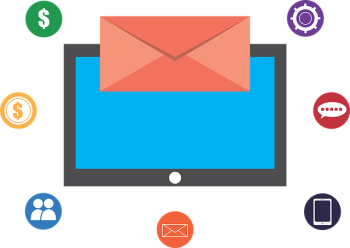
Image thanks to Maialisa on Pixabay
Are you overwhelmed by your email marketing? Trying to figure out which email metrics matter? What should you be measuring? Opens? Clicks? Are bounces a problem?
The great thing about email marketing compared to print is that you can get all sorts of data about your messages.
With email you can see how many people received your message, how many people opened it, whether they clicked on any of the content, and if they bought anything from you. With snail mail, we had to wait weeks and weeks to see results. Email lets you do that in minutes.
But which are the email metrics that matter?
Delivery rate
The first thing you want to check is your delivery rate. This is the number of people who actually get your message delivered. If you send a message to 5,000 people and only 3,500 get it, it’s time to change email providers.
A good provider will use various authentication tools to verify that you’re not a spammer, and check your messages for spam before you send them. Also, make sure that you take these steps to stay out of the spam filter.
Bounce rate
The next thing to look at is your bounce rate. The bounce rate is the number of emails that didn’t reach an inbox. This can happen for several reasons. Sometimes, the server at the other end is broken. Or, the person could have moved/left their job and not given a new address. And, sometimes, people provide fake addresses just to get your fabulous ebook. If your bounce rate is high, check to see why. A high bounce rate can hurt the delivery of your other messages. It can also cost you money, since many email providers charge by the size of your list.
Open rate
This one is pretty self-explanatory. It’s the percentage of people who open your email. Higher numbers are good. It tells you how interested people are in your messages. Track this to see which messages (and topics) are the most popular with your readers.
It’s also a good idea to monitor when your emails are opened. Do you get better results emailing in the morning? Or the afternoon? Check to see what day or time of day gets the best response and adjust your marketing schedule accordingly.
Click through rate
Click through is the number of people who click on one of the links in your email. This will vary depending on how many links you have, the number of times each person clicks on a single link, and the type of content in your newsletter. Full articles will get fewer clicks than an excerpt which requires readers to click through to a web site to read the entire piece.
The click through rate can also be affected by the quality of your email opt-in procedure, and how interested your readers are in your content. The numbers won’t be perfect, as the email software can only track HTML emails, but they’re a good general guide. Each business and each email is different, but you can get a general idea on how your click through compares to your competition.
Unsubscribe rates
If these are high, you may need to rethink your strategy, or your content. Something isn’t connecting. Have you delivered what you promised in your sign up page? Or have you wandered off to other topics that your subscribers weren’t expecting?AWeber, by the way, has an automatic box that pops up asking readers to explain why they unsubscribed (which is very useful).
Sales
This is the best part. If you were selling something, how many people bought it?
Set up a form to track your sales confirmation page (the last page they see when they buy your product). Add a description (sale!), and the amount. Now you can count up what you earned.



